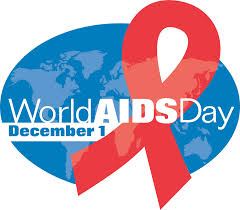In this season of reflection, today’s World AIDS Day is a time to think of the incredible life-saving advances accomplished since the early 1980s and to be reinvigorated to do the continual work that is still necessary.
The Secretary’s Minority AIDS Initiative Fund of the US Department of Health and Human Services has designated this year’s theme as “Increasing Impact through Transparency, Accountability, and Partnerships.”
As a nurse, December 1 is a time to help patients break the stigma of HIV and AIDS and to offer support, information, and treatment to those affected by the disease. December 1 is also a time to honor those who died from this disease and to help their families and loved ones know the fight against AIDS continues.
In 1988, World AIDS Day was first recognized, only five years after the AIDS virus was first identified and in the middle of the crisis surrounding the disease. According to the National AIDS Trust, nearly 37 million people live with HIV and AIDS-related diseases right now – just slightly more than the number of people who have died from it.
According the the Centers for Disease Control and Prevention, minorities are especially hard-hit with infection rates. African American men, particularly those who are gay or bisexual, have higher proportional rates of infection than other populations. Part of the challenge in AIDS eduction and awareness is understanding some of the cultural, ethnic, socio-economic, and regional influences that influence behaviors; prevent access to information, treatment, and prevention; and deepen a stigma around AIDS.
Many nurses today remember the near-hysteria that greeted the outbreak of AIDS-related illness and the resulting misinformation, discrimination, and hostility that followed. Just as nurses back then treated their gravely ill patients with respect and dignity, they continue to do so today. The difference is that today’s treatments and advances have given nurses a reason to offer hope to those diagnosed or living with HIV and AIDS illness. There is so much more known about the disease, its causes, its transmission, and effective treatment approaches.
Today, treatments that were never imagined 35 years ago are possible. Post exposure treatment (known as post-exposure prophylaxis) is available as is pre-exposure treatment. Drug therapies can keep the disease from advancing as rapidly as it once did.
Wear a red ribbon today, the long-standing traditional representation of AIDS awareness, in honor of those impacted by AIDS. Use #WAD2017 on your social media channels to spread awareness and call attention to this day. Each time it is brought out into the open, a bit of the stigma will fade.
- WOC Nurses Week Highlights Specialty - April 16, 2024
- Honoring Radiology Nurses Day on April 12 - April 12, 2024
- Travel Offers New Career Possibilities - April 8, 2024



